The major machines of the Qatar Organic Fertilizer Powder Production Line: Uniform Feeder, Half-Wet Material Crusher, Rotary Screener Machine, Powder Fertilizer Packing Machine, Belt Conveyor and Mobile Belt Conveyor.
Half-Wet Material Crusher:
The series of semi-wet material crusher is a professional one with many years experience and advanced crushing technology at home and abroad by our scientific research personnel. The machine completely solve the problem of organics crushing with high moisture content, which is a national initiative, and declare the national patent. The successful development of this machine played a key role in cutting down the process of the bio-organic and compost fertilizer, Reduce equipment investment and Saving running cost.
Rotary drum screening machine is common equipment in fertilizer production, mainly used for separating the returned materials and finished product, also realize the classification of the end products, and even classify the end products.
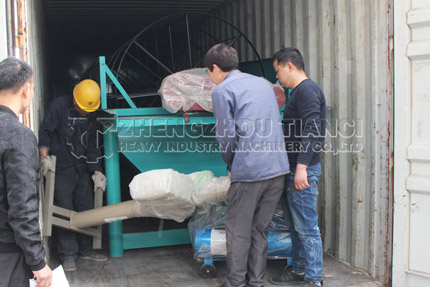
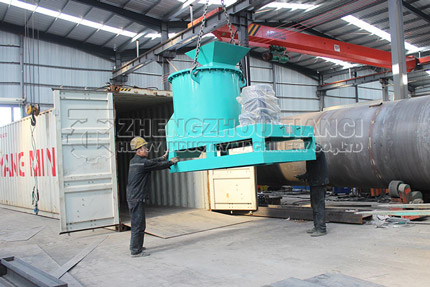
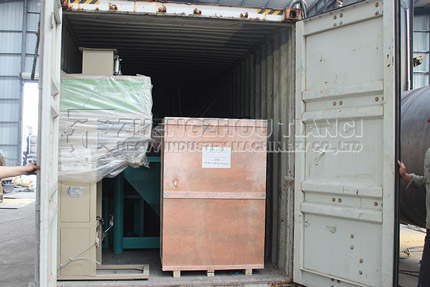
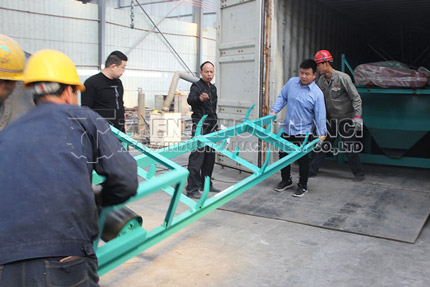
This is a common organic fertilizer production line.
Simple NPK compound fertilizer disc granulation production process
NPK compound fertilizer disc granulation production process flow:
1. Transport qualified raw materials such as nitrogen, phosphorus, potassium and filler to relevant weighing equipment.
2. After weighing, the raw materials are conveyed to the mixer and evenly stirred by strong force.
3. Material is transported to the uniform feeder and evenly added to the rotating disc of the disc granulator; appropriate amount of water is sprayed on the material of the disc through the liquid spraying device of the disc granulator to satisfy the moisture required for the granulation of powder. The rotating disc and the edge of the disc exert friction and centrifugal action on the material to produce the material. The circumferential movement makes the powder particles knead and squeeze each other, and gradually reunite into balls. Because of the difference of particle mass, the gravitational and centrifugal effects are also different. When the gravitational and centrifugal effects of particles increase enough to overcome the friction between particles, they will be thrown out of the disk, and smaller particles will remain in the disk and continue to accumulate fine particles.
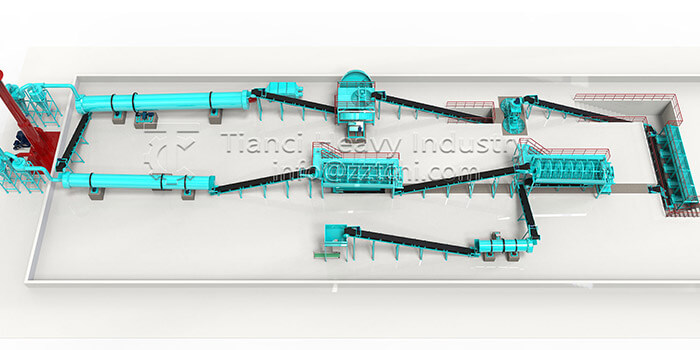
4. NPK fertilizer particles are transported to rotary dryer for heat exchange with heat from hot blast stove.
5. Particles are transported to rotary cooler to cool fertilizers by natural or forced cooling air.
6. Fertilizer is transported to the screening machine, and the unqualified fine particles are directly returned to the NPK fertilizer production line for reuse, and the large particles are crushed by the crusher and then returned to the material equalizer.
7. The qualified products after screening are transported to the coating machine for coating treatment.
8. Qualified fertilizer is transported to full-automatic packaging scale for weighing, packaging and storage.
9. Drying, cooling and workshop dust are discharged after being treated by cyclone dust collector, labyrinth dust chamber and wet scrubbing.
Disc fertilizer granulator has the following advantages in compound fertilizer production process
1. The disc granulator can operate intuitively and keep abreast of the operation of the equipment at any time. If abnormal is found, it can be adjusted in time.
2 The size of the particles is determined by the inclination and rotation speed of the disc, and the inclination and rotation speed of the disc can be adjusted. Therefore, the disc granulation process has a wide control range of particle size, strong adaptability, and a very high sphericity rate. It reaches 70%~90%.
3 Disc granulation process has short production process, simple structure, low investment and easy operation. It is suitable for small and medium-sized enterprises.
4 The raw materials of this process have wide adaptability: urea, ammonium chloride, ammonium sulfate, ammonium carbonate and so on. Phosphorus sources are: calcium, heavy calcium, monoammonium phosphate, diammonium phosphate, calcium magnesium phosphate fertilizer and so on. Potassium sources include potassium chloride and potassium sulfate.
5 Compound fertilizer product varieties: can produce nitrogen, phosphorus, potassium nutrients from 20 to 48% content of inorganic compound fertilizer, organic fertilizer, organic (inorganic) compound fertilizer, bio-organic fertilizer and other products.